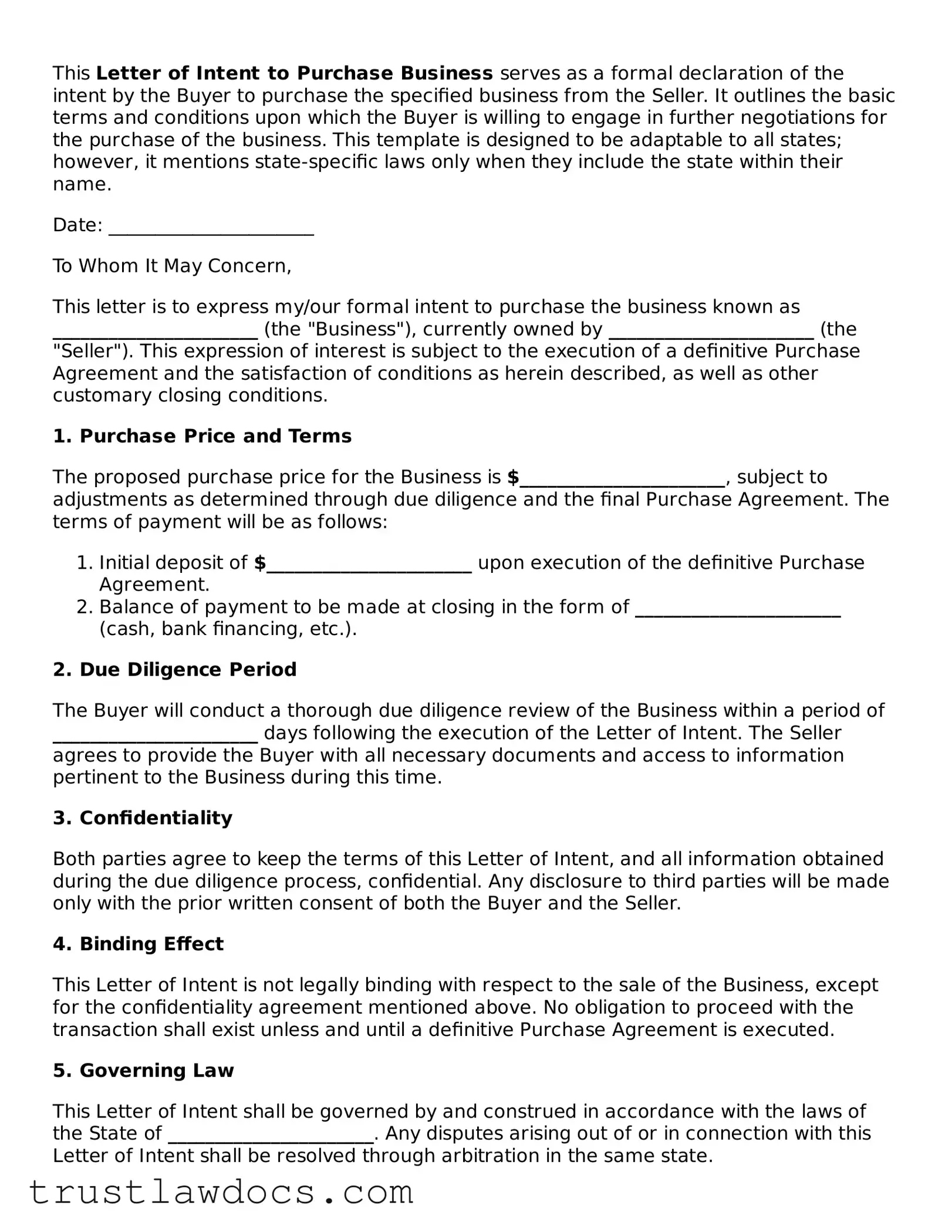This Letter of Intent to Purchase Business serves as a formal declaration of the intent by the Buyer to purchase the specified business from the Seller. It outlines the basic terms and conditions upon which the Buyer is willing to engage in further negotiations for the purchase of the business. This template is designed to be adaptable to all states; however, it mentions state-specific laws only when they include the state within their name.
Date: ______________________
To Whom It May Concern,
This letter is to express my/our formal intent to purchase the business known as ______________________ (the "Business"), currently owned by ______________________ (the "Seller"). This expression of interest is subject to the execution of a definitive Purchase Agreement and the satisfaction of conditions as herein described, as well as other customary closing conditions.
1. Purchase Price and Terms
The proposed purchase price for the Business is $______________________, subject to adjustments as determined through due diligence and the final Purchase Agreement. The terms of payment will be as follows:
- Initial deposit of $______________________ upon execution of the definitive Purchase Agreement.
- Balance of payment to be made at closing in the form of ______________________ (cash, bank financing, etc.).
2. Due Diligence Period
The Buyer will conduct a thorough due diligence review of the Business within a period of ______________________ days following the execution of the Letter of Intent. The Seller agrees to provide the Buyer with all necessary documents and access to information pertinent to the Business during this time.
3. Confidentiality
Both parties agree to keep the terms of this Letter of Intent, and all information obtained during the due diligence process, confidential. Any disclosure to third parties will be made only with the prior written consent of both the Buyer and the Seller.
4. Binding Effect
This Letter of Intent is not legally binding with respect to the sale of the Business, except for the confidentiality agreement mentioned above. No obligation to proceed with the transaction shall exist unless and until a definitive Purchase Agreement is executed.
5. Governing Law
This Letter of Intent shall be governed by and construed in accordance with the laws of the State of ______________________. Any disputes arising out of or in connection with this Letter of Intent shall be resolved through arbitration in the same state.
We look forward to moving ahead with the proposed transaction and anticipate prompt and mutually beneficial agreements. Please indicate your acceptance of this Letter of Intent by signing and returning a copy to us.
Sincerely,
____________________________________
(Buyer's Name)
Buyer's Contact Information:
Address: ____________________________________
Phone: ____________________________________
Email: ____________________________________
Acknowledged and Agreed:
____________________________________
(Seller's Name)
Seller's Contact Information:
Address: ____________________________________
Phone: ____________________________________
Email: ____________________________________
